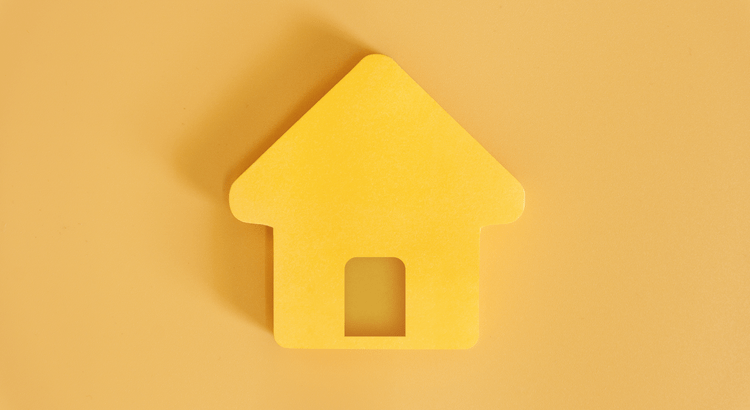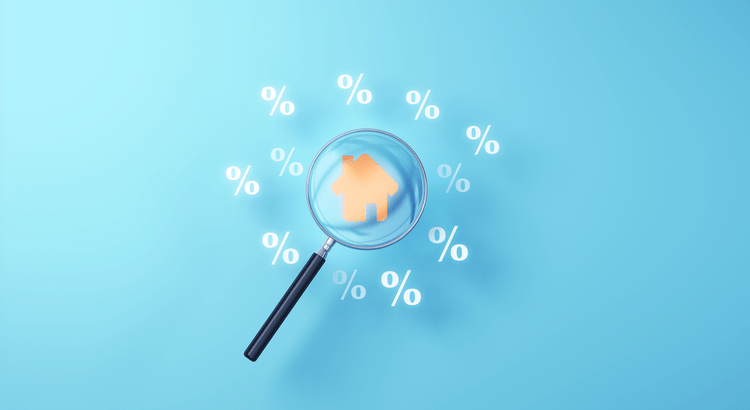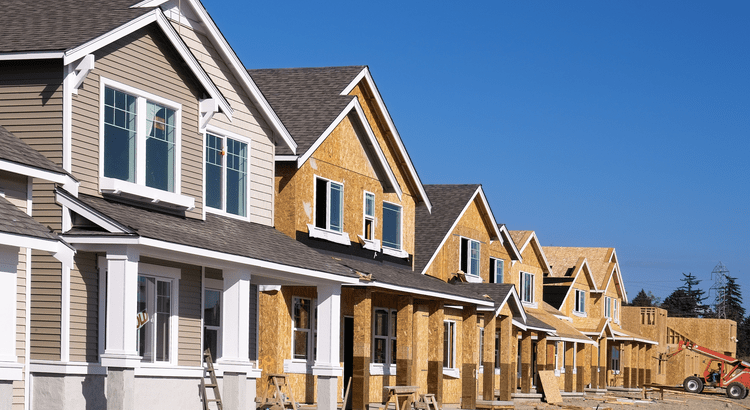

Breaking Into the Market: Smart Moves for First-Time Buyers
If you’re like a lot of aspiring homebuyers, there’s a major hurdle standing in your way — the cost of living. From groceries to gas, eggs, and just about everything else, prices have gone up. And that rings true for home prices, too. But even when everything feels expensive, there are still ways to make homeownership more than an item on your wish list. You may just need to think about where you plan to buy a bit differently. Think of Your First Home as a Stepping Stone One of the biggest misconceptions among buyers is that their first home has to be their forever home – or that it has to check all the boxes of what they want right out of the gate. In reality, it’s just a starting point. Once you own a home, you start to build equity, which grows over time as home prices rise. Down the road, if you want to move — whether to a larger space, a better location, or both — the equity you’ve gained can help you do just that. So rather than waiting until you can afford your dream home in your ideal neighborhood, consider starting with something that works for now. Expand Your Search To Find More Affordable Options If high home prices in your favorite area are holding you back, it’s time to cast a wider net. By keeping an open mind and being flexible with location, you may be surprised at what’s possible within your budget. Many buyers find success by looking in surrounding areas – and some even choose to move out of state. According to a report from Realtor.com, these are some of the best markets for first-time homebuyers this year (see chart below): Of course, moving to a different state isn’t for everyone – and isn’t a necessity. The right agent can help you find more cost-effective options wherever you are. If you want to stay local, looking just outside your preferred neighborhood could help you find something you can afford that’s still pretty close to your favorite restaurants, shops, and activities. Sometimes, moving as little as 10 minutes away makes a big difference. And the best way to see what’s available is to work with a real estate agent who understands the local market and can help you identify hidden gems nearby. An agent can point you to communities you may not have considered that have lower price tags now and are steadily gaining value and appeal. That way you can buy your first home and be set up to gain equity through the years. Bottom Line Today’s cost of living is a challenge for many homebuyers. But by exploring different areas and working with a knowledgeable agent, you can take that first step toward owning a home — and building equity for your future. How far outside of your area would you look to make homeownership happen? Let’s connect to chat through your options.
Read More

Two Resources That Can Help You Buy a Home Right Now
A recent report from Realtor.com says 20% of Americans don’t think homeownership is achievable. Maybe you feel the same way. With inflation driving up day-to-day expenses, saving enough to buy your first home is more of a challenge. But here’s the thing. With the right resources and help, you can still make it happen. There are options that can help make buying a home possible today — even if your savings are limited or your credit isn’t perfect. Let’s explore just two of the solutions that could help get you into your first home no matter the market. 1. FHA Loans If your down payment savings and your credit score aren’t where you want them to be, an FHA loan could be your pathway to buying a home. According to the U.S. Department of Housing and Urban Development (HUD) and Bankrate, the big perks of an FHA home loan are: Lower Down Payments: They typically require a smaller down payment than conventional loans, sometimes as low as 3.5% of the home’s purchase price. Lower Credit Score Requirements: They’re designed to help buyers with credit scores that might not qualify for conventional financing. This means, when conventional loans aren’t an option, you may still be able to get an FHA loan. The first step is to connect with a lender who can help you explore your options and determine if you qualify. 2. Homeownership Assistance Programs And if you need a more budget-friendly down payment, that’s not your only option. Did you know there are over 2,000 homeownership assistance programs available across the U.S. according to Down Payment Resource? And more than 75% of these programs are designed to help buyers with their down payment. Here’s a bit more information about why these could be such powerful tools for you: Financial Support: The average benefit for buyers who qualify for down payment assistance is $17,000. And that’s not a small number. Stackable Benefits: To make it even better, in some cases, you may be able to qualify for multiple programs at once, giving your down payment an even bigger boost. Rob Chrane, CEO of Down Payment Resource confirms a little-known fact: “Some of these programs can be layered. And so, in other words, you may not be limited to just one program.” If you want to learn more or see what you qualify for, be sure to lean on the pros. A trusted real estate agent and a lender can guide you through the process, explain the help that’s out there, and connect you with resources to make buying a home a reality. Bottom Line If you’re ready to stop wondering if buying a home is possible and start exploring solutions, let’s connect.
Read More

Mortgage Forbearance: A Helpful Option for Homeowners Facing Challenges
Let’s face it – life can throw some curveballs. Whether it’s a job loss, unexpected bills, or a natural disaster, financial struggles can happen to anyone. But here’s the good news. If you’re a homeowner feeling the squeeze, there’s a lifeline that many people don’t realize is still available: mortgage forbearance. What Is Mortgage Forbearance? As Bankrate explains: “Mortgage forbearance is an option that allows borrowers to pause or lower their mortgage payments while dealing with a short-term crisis, such as a job loss, illness or other financial setback . . . When you can’t afford to pay your mortgage, forbearance gives you a chance to sort out your finances and get back on track.” A common misconception is that forbearance was only accessible during the COVID-19 pandemic. While it did play a significant role in helping homeowners through that crisis, what many people don’t know is that forbearance is still a tool to support borrowers in times of need. Today, it remains a vital option to help homeowners in certain circumstances avoid delinquency and, ultimately, foreclosure. The Current State of Mortgage Forbearance Forbearance continues to serve as a valuable safety net for homeowners facing temporary financial challenges. While the overall rate of forbearance has seen a slight increase recently, it’s important to understand what’s driving this change and how it fits into the broader picture. According to Marina Walsh, VP of Industry Analysis at the Mortgage Bankers Association (MBA): “The overall mortgage forbearance rate increased three basis points in November and has now risen for six consecutive months.” This may seem concerning at first glance, but let’s break it down. The graph below, going all the way back to 2020, puts things into perspective: While the share of mortgages in forbearance has significantly declined since its peak in mid-2020, there has been a slight but notable increase in recent months. This uptick is largely tied to the effects of two recent hurricanes — Helene and Milton. Natural disasters like these often create temporary financial hardships for homeowners, making forbearance a crucial safety net during recovery. In fact, 46% of borrowers in forbearance today cite natural disasters as the reason for their financial struggles. Even with the most recent uptick, the share of mortgages in forbearance is nowhere near pandemic levels, and, thankfully, reflects a very small portion of homeowners overall. Why Forbearance Matters Forbearance can help borrowers avoid the spiral of missed payments and foreclosure. It provides breathing room to address challenges and plan next steps. And while most homeowners today are not in a position to need forbearance, thanks to strong equity and foundations of the current housing market, it is an option for the few who do need it. If you or a homeowner you know is facing financial difficulties, the first step is to contact your mortgage lender. They can walk you through the forbearance process and help you understand your options. Keep in mind that forbearance is not automatic — you need to apply and discuss the terms with your lender. Bottom Line In tough times, knowing your options can bring peace of mind. Forbearance isn’t just a financial tool — it’s a lifeline. And while the recent increase in forbearance rates might make headlines that give you pause, the truth is this option is working exactly as it should: helping those who need it most get through difficult moments without losing their homes.
Read More

When Will Mortgage Rates Come Down?
One of the biggest questions on everyone’s minds right now is: when will mortgage rates come down? After several years of rising rates and a lot of bouncing around in 2024, we’re all eager for some relief. While no one can project where rates will go with complete accuracy or the exact timing, experts offer some insight into what we might see going into next year. Here’s what the latest forecasts show. Mortgage Rates Are Expected To Ease and Stabilize in 2025 After a lot of volatility and uncertainty, the most updated forecasts suggest rates will start to stabilize over the next year, and should ease a bit compared to where they are right now (see graph below): As Lawrence Yun, Chief Economist at the National Association of Realtors (NAR), says: “While mortgage rates remain elevated, they are expected to stabilize.” Key Factors That’ll Impact the Future of Mortgage Rates It’s important to note that the timing and the pace of what happens with mortgage rates is one of the most challenging forecasts to make in the housing market. That’s because these forecasts hinge on a few key factors all lining up. So don’t be fooled, because while rates are expected to come down slightly, they’re going to be a moving target. And the ups and downs of ongoing economic drivers will likely stick around. Here’s a look at just a few of the things that’ll influence where they go from here: Inflation: If inflation cools, rates could dip a bit more. On the flip side, if inflation rises or remains stubbornly high, rates may stay elevated longer. Unemployment Rate: The unemployment rate also plays a significant role in upcoming decisions by the Federal Reserve (the Fed). And while the Fed doesn’t set mortgage rates, their actions do reflect what’s happening in the greater economy, which can have an impact. Government Policies: With the next administration set to take office in January, fiscal and monetary policies could also affect how financial markets respond and where rates go from here. Remember, these forecasts are based on the best information available right now. As new economic data comes out, experts will revise their projections accordingly. So, don’t try to time the market based on these forecasts alone. Instead, the best thing you can do is focus on what you can control right now. Work on improving your credit score, put away any extra cash for your down payment, and automate your savings. All of these things will help you reach your homeownership goals even faster. And be sure to connect with a trusted agent and a lender, so you always have the latest updates – and an expert opinion on what that means for your move. Bottom Line If you’re planning to move and want to stay informed about where mortgage rates are heading, let’s connect.
Read More
Categories
- All Blogs (74)
- Affordability (3)
- agent value (5)
- Baby Boomers (1)
- Buyer Tips (5)
- Buyers (5)
- Buying Myths (20)
- Buying Tips (4)
- Demographics (6)
- Economy (3)
- Finance (1)
- First Time Home Buyers (17)
- First-time Buyers (7)
- For Buyers (39)
- For Sellers (26)
- Forecasts (2)
- Foreclosures (4)
- Home Prices (3)
- Homeownership (2)
- Housing Market Updates (21)
- Interest Rates (10)
- Market Update (2)
- Mortgage Rates (6)
- Move-Up Buyers (9)
- New Construction (2)
- Pricing (6)
- Real Estate News (5)
- Rent vs. Buy (5)
- Renting (1)
- Seller Tips (1)
- Sellers (1)
- Selling Myths (11)
- Selling Tips (4)
Recent Posts











